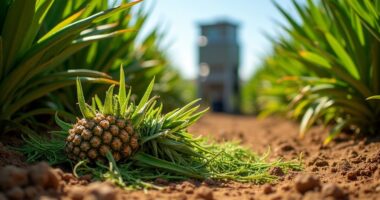The cotton industry is reinventing itself through regenerative farming practices and innovative recycled fibres. With crop rotation and cover crops boosting soil health, farmers are also tapping into post-consumer waste for recycling efforts. This eco-friendly approach not only reduces waste but also conserves resources. As consumers clamor for greener options, the market dynamics shift, favoring sustainable choices over synthetic alternatives. It’s a fascinating journey towards a circular economy in textiles, and there’s much more to explore.
Quick Overview
- Regenerative cotton farming practices, like crop rotation and cover crops, restore soil health and enhance resilience in agricultural systems.
- Recycled cotton fibres, made from post-consumer waste, reduce landfill waste while conserving water and energy resources.
- The shift towards regenerative and recycled cotton meets rising consumer demand for sustainable and eco-friendly textile options.
- Innovations in fibre recycling and precision agriculture promote transparency in supply chains, supporting a circular economy in the cotton industry.
- Market dynamics show a projected increase in cotton production while facing competition from synthetic fibres, emphasizing the need for sustainable practices.
The Rise of Regenerative Cotton Farming Practices
In recent years, regenerative cotton farming has emerged like a phoenix rising from the ashes of conventional agricultural practices, and it’s making waves across the U.S. cotton belt.
With 78% of growers embracing crop rotation and 62% using cover crops, these practices not only restore soil health but also make farming a bit more eco-friendly.
A whopping 78% of farmers are rotating crops, and 62% are using cover crops—boosting soil health and eco-friendliness!
Imagine soil that’s happier and healthier, like a well-fed puppy.
Plus, as consumers demand sustainable options, the market for regenerative cotton is booming.
It’s a win-win: farmers save money on chemicals, and the planet gets a much-needed hug.
Focusing on soil biology diversity helps create resilient agricultural systems that naturally resist pests and diseases.
Additionally, enhanced carbon sequestration from improved soil health is helping to mitigate climate change impacts, making regenerative practices even more valuable.
The Climate-Smart Cotton project by Texas A&M University is set to further advance these practices over the next five years.
Who knew cotton could be this cool?
Innovations in Recycled Cotton Fibres
How can something as humble as cotton be transformed into a sustainable superhero?
Innovations in recycled cotton fibres are redefining the textile landscape.
Companies are now using post-consumer waste, turning old garments into fresh fabric through advanced shredding and re-spinning techniques—think of it as giving cotton a second wind.
This eco-friendly process not only reduces landfill waste but also conserves water and energy.
Additionally, blending recycled cotton with other fibres creates unique textures and durability.
It’s like mixing old records to produce a fresh playlist.
These recycled options provide a significant advantage over conventional cotton, which is one of the most resource-intensive textiles in terms of water consumption and chemical use.
With every stitch, recycled cotton fibres help stitch together a more sustainable future, one garment at a time.
Impact on Market Dynamics and Consumer Trends
Increasingly, eco-consciousness is at the forefront, with shoppers prioritizing regenerative and organic cotton for its environmental benefits. Think of it as a green revolution: consumers want to wear their values. With cutting-edge practices like precision agriculture and blockchain enhancing supply chain transparency, cotton’s appeal grows stronger. As the fashion industry embraces natural fibers, and the home textiles sector demands sustainability, cotton finds its place in the circular economy. This shift toward continuous reuse of materials is fundamentally changing how companies design textile products, eliminating waste through intentional product lifecycles. However, the competition with cheaper synthetic fibers looms large, reminding us that while consumers crave sustainability, price still matters. Additionally, the 2025 cotton crop is projected at 13.9 million bales, which reflects the growing demand for sustainable practices in cotton production. The global cotton market size in 2021 was 39.207 million dollars, indicating a strong foundation for the industry’s growth.









